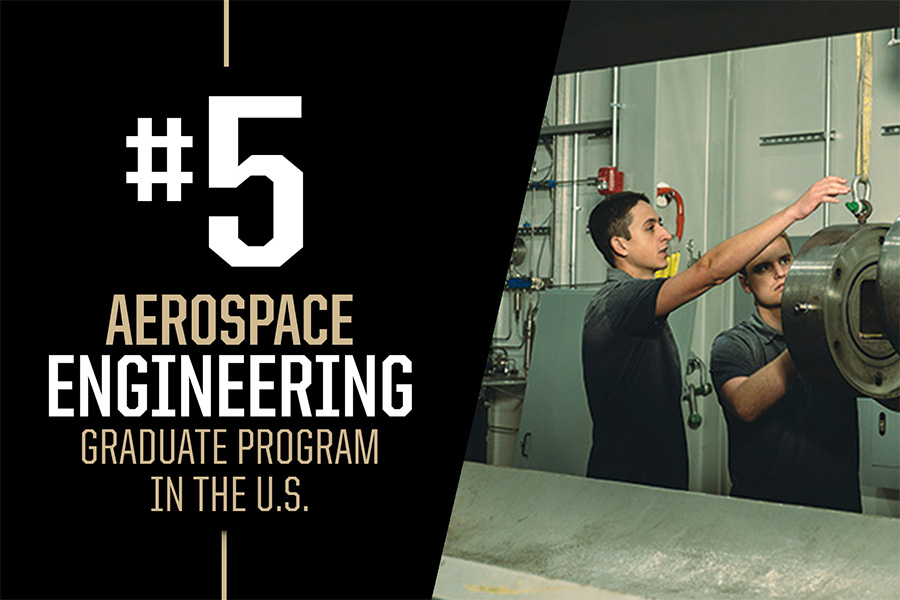Purdue AAE continues to be a top 5 grad program in the country

Purdue University’s School of Aeronautics and Astronautics (AAE) has once again been recognized as one of the nation’s top aerospace engineering graduate programs, earning the No. 5 spot in the 2025 U.S. News & World Report rankings.
Purdue AAE has ranked among the top six graduate programs nationally for 27 consecutive years — a streak that began in 1998 and stands as a testament to the program’s academic rigor, research excellence, and alumni impact across the aerospace industry. This is combined with AAE’s position of graduating the most aerospace engineers, combining BS, MS and PhD degrees, in the US since 2020.
“We’re proud our peers, once again, recognize Purdue AAE as a top five program, known for our deep commitment to research, innovation, and preparing future aerospace leaders,” said professor Bill Crossley, the Uhrig & Vournas Head of Aeronautics and Astronautics. “The reputation-based rankings may fluctuate a bit from year to year, but our commitment to excellence remains constant. Our students, faculty, and alumni continue to set the pace for innovation and leadership in aerospace.”
Coming from a four-way tie for second place last year, this shift is not unexpected — Just 0.2 points separate the top five programs. Purdue’s undergraduate aerospace engineering program is also among the best in the nation — ranked #3 in the 2025 U.S. News & World Report Best Colleges rankings.
Just last month, Forbes named Purdue a “New Ivy” reminding the world of the high value and prestige provided by our hands-on programs. Among the 20 public and private institutions recognized as “New Ivies,” Purdue stands out as the only public university in Indiana and one of just four represented from the 18-member Big Ten conference.
With nationally recognized faculty, deep industry ties, and a legacy that includes 27 astronauts and thousands of alumni across government and private aerospace sectors, Purdue AAE continues to launch careers — and shape the future of flight and advancing both exploration and utilization of space.
